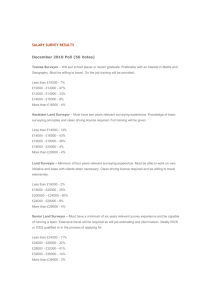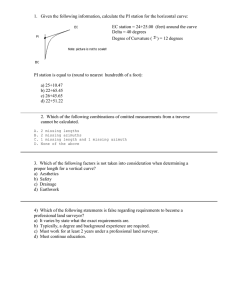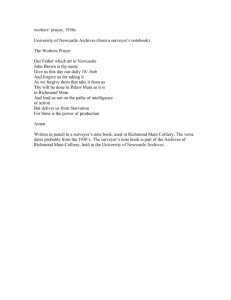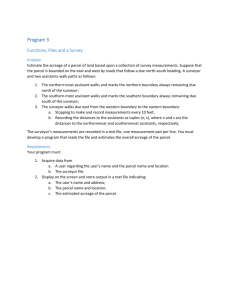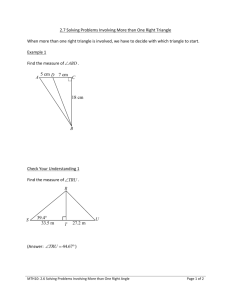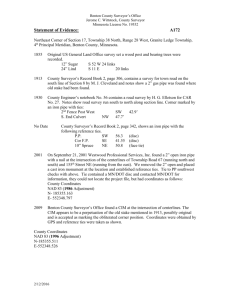SURVEY OBJECTIVES DUTIES OF THE ACCURACY OF SURVEYS
advertisement
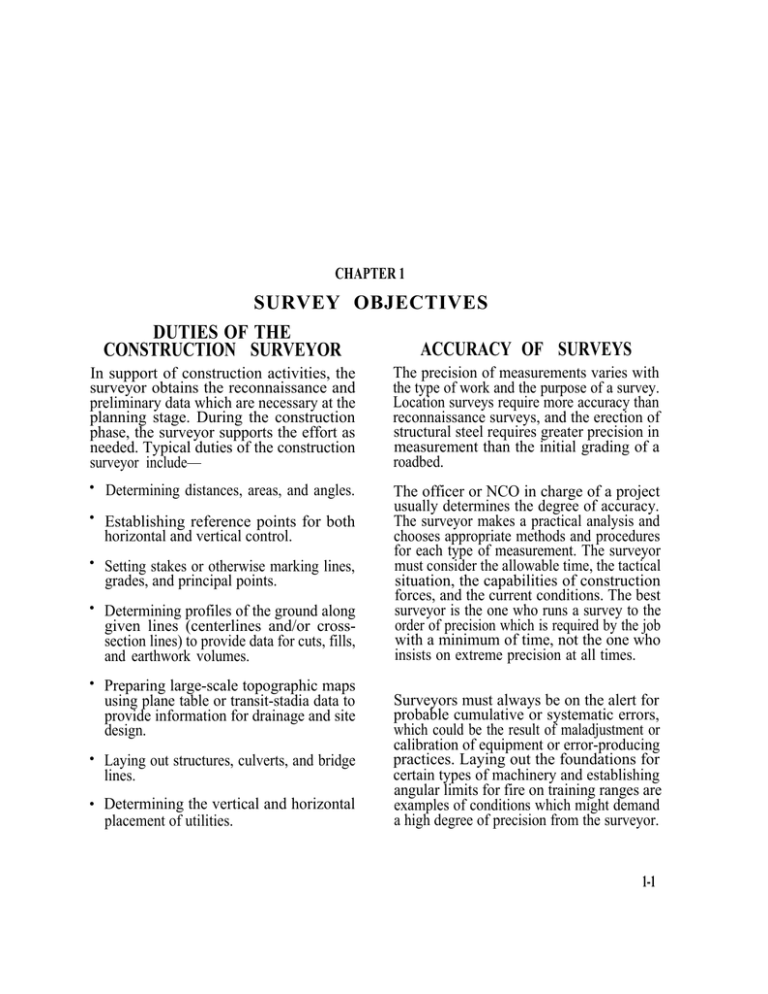
CHAPTER 1 SURVEY OBJECTIVES DUTIES OF THE ACCURACY OF SURVEYS CONSTRUCTION SURVEYOR In support of construction activities, the surveyor obtains the reconnaissance and preliminary data which are necessary at the planning stage. During the construction phase, the surveyor supports the effort as needed. Typical duties of the construction surveyor include— The precision of measurements varies with the type of work and the purpose of a survey. Location surveys require more accuracy than reconnaissance surveys, and the erection of structural steel requires greater precision in measurement than the initial grading of a roadbed. • Determining distances, areas, and angles. The officer or NCO in charge of a project usually determines the degree of accuracy. The surveyor makes a practical analysis and chooses appropriate methods and procedures for each type of measurement. The surveyor must consider the allowable time, the tactical situation, the capabilities of construction forces, and the current conditions. The best surveyor is the one who runs a survey to the order of precision which is required by the job with a minimum of time, not the one who insists on extreme precision at all times. • Establishing reference points for both horizontal and vertical control. • Setting stakes or otherwise marking lines, grades, and principal points. • Determining profiles of the ground along given lines (centerlines and/or crosssection lines) to provide data for cuts, fills, and earthwork volumes. • Preparing large-scale topographic maps using plane table or transit-stadia data to provide information for drainage and site design. • Laying out structures, culverts, and bridge lines. • Determining the vertical and horizontal placement of utilities. Surveyors must always be on the alert for probable cumulative or systematic errors, which could be the result of maladjustment or calibration of equipment or error-producing practices. Laying out the foundations for certain types of machinery and establishing angular limits for fire on training ranges are examples of conditions which might demand a high degree of precision from the surveyor. 1-1 FM 5-233 For the most part, the construction surveyor will not have to work to the most precise limits of the equipment. However, the surveyor should recognize the limits of the validity in the results. The surveyor cannot expect resultant data to have a greater degree of accuracy than that of the least precise measurement involved. The surveyor must analyze both angular and linear measurements, which are a part of the survey problem, in order to maintain comparable precision throughout. • Do not crowd the data entered. Use additional pages. • Keep sketches plain and uncluttered. • Record numerical values so they always indicate the degree of precision to which a measurement is taken. For example, rod readings taken to the nearest 0.01 foot should be recorded as 5.30 feet, not as 5.3 feet. • Use explanatory notes to supplement numerical data and sketches. These notes often replace sketches and are usually placed on the right-hand page on the same line as the numerical data they explain. • Follow the basic note-keeping rules covered in TM 5-232. FIELD NOTES The quality and character of the surveyor’s field notes are as important as the use of instruments. The comprehensiveness, neatness, and reliability of the surveyor’s field notes measure ability. Numerical data, sketches, and explanatory notes must be so clear that they can be interpreted in only one way, the correct way. Office entries, such as computed or corrected values, should be clearly distinguishable from original material. This is often done by making office entries in red ink. Some good rules to follow in taking field notes are— • Use a sharp, hard pencil (4H preferred). 1-2 METRIC SYSTEM The military surveyor may work from data based upon the metric system of measurement or convert data into metric equivalents. Tables A-13 and A-14 in appendix A provide metric conversions.
